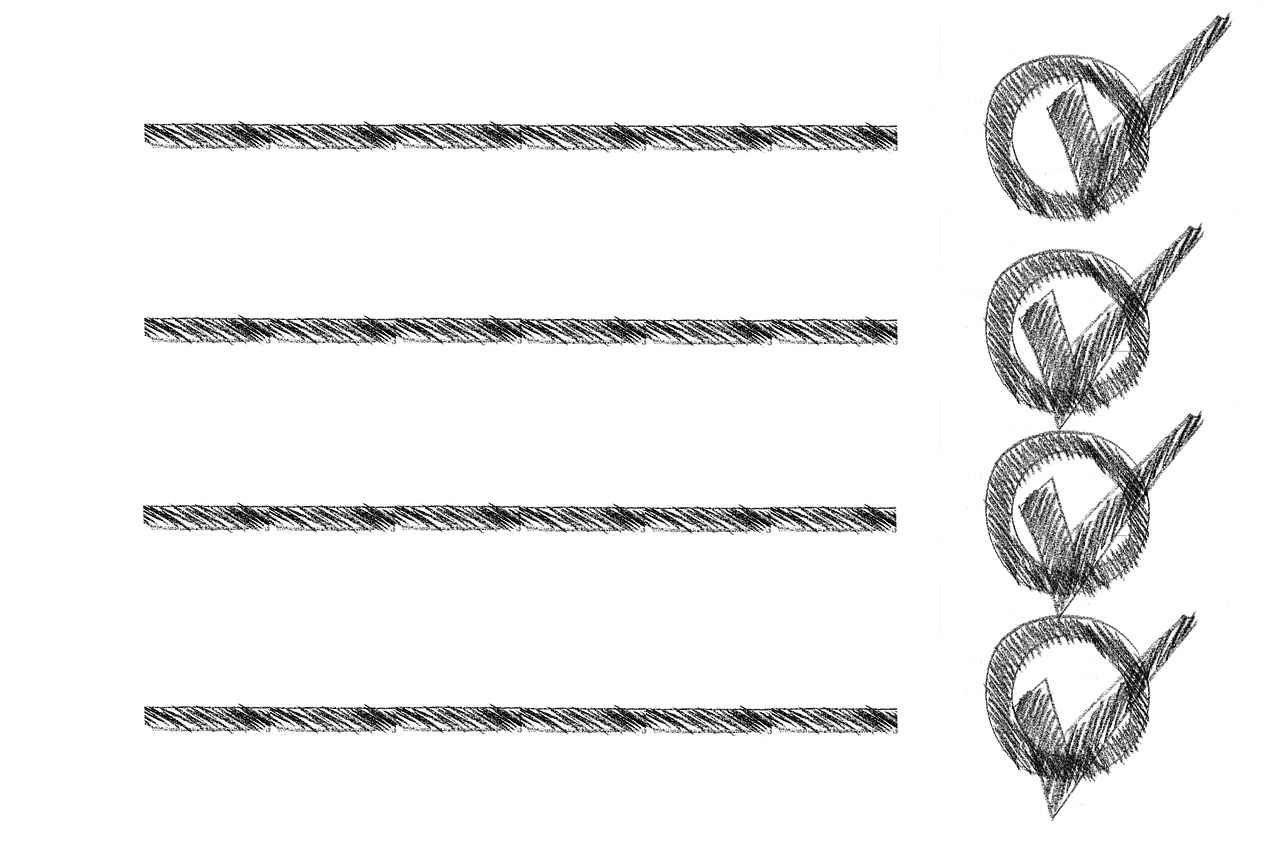This article provides a comprehensive guide on writing a check for $31.25, detailing each step and offering practical tips to ensure accuracy and clarity in your transaction. Writing a check may seem outdated in today’s digital world, but it remains a necessary skill. Whether you’re paying a bill or sending money to a friend, knowing how to write a check correctly is essential.
Understanding the Basics of Writing a Check
Before diving into the specifics of writing a check, it’s essential to understand the fundamental components that make up a check and their purposes. A typical check consists of the following:
- Payee: The person or organization receiving the money.
- Amount: The total sum being paid, both in numbers and words.
- Date: The date the check is written.
- Signature: Your authorization to release the funds.
- Memo: An optional note about the payment.
Gathering Necessary Information
To write a check accurately, you need specific information, including the payee’s name, the amount, and your account details. Ensure you have the following:
- Payee’s full name or business name.
- Your bank account number and routing number.
- The amount of $31.25 clearly defined.
- Your signature.
Step 1: Date the Check
The date is a crucial part of a check. Write the date in the upper right corner, typically in the format of MM/DD/YYYY. This ensures that the check is processed on the correct day and can help avoid confusion over payment timing.
Step 2: Write the Payee’s Name
Writing the correct name of the payee is vital for ensuring the check is processed. Use the full legal name of the individual or business. For example, instead of writing “John,” write “John Smith.” This helps prevent any issues with cashing the check.
Step 3: Enter the Amount in Numbers
Entering the correct numerical amount is essential. In the box on the right side of the check, write 31.25. Make sure to include the dollar sign ($) and ensure that the numbers are clear and legible to avoid any misinterpretation.
Step 4: Write the Amount in Words
To avoid confusion, checks require the amount to be written in words. In the line below the payee’s name, write “Thirty-one and 25/100.” This serves as a verification step, ensuring that there is no discrepancy between the numerical and written amounts.
Step 5: Add a Memo (Optional)
While not mandatory, adding a memo can clarify the purpose of the check. For instance, you might write “Rent for November” or “Gift.” This not only helps the payee understand the purpose of the payment but can also serve as a reminder for you when reviewing your finances.
Step 6: Sign the Check
Your signature is necessary for the check to be valid. Sign your name on the bottom right line of the check. Ensure that your signature matches the one your bank has on file to avoid any issues when the check is cashed.
Step 7: Review the Check for Accuracy
Before handing over the check, it’s crucial to review it for any mistakes. Check the following:
- Correct date
- Accurate payee name
- Correct amount in both numbers and words
- Your signature
Ensuring all details are correct helps prevent delays or issues with payment.
Common Mistakes to Avoid When Writing a Check
Mistakes can lead to delays or issues with payment. Common pitfalls include:
- Incorrect date format
- Misspelling the payee’s name
- Writing the amount incorrectly
- Failing to sign the check
Security Tips for Writing Checks
Checks can be vulnerable to fraud. To secure your checks and protect your financial information, consider the following tips:
- Use a pen to write checks, as pencils can be altered.
- Store checks in a safe place.
- Be cautious of sharing your account details.
- Monitor your bank statements regularly for unauthorized transactions.
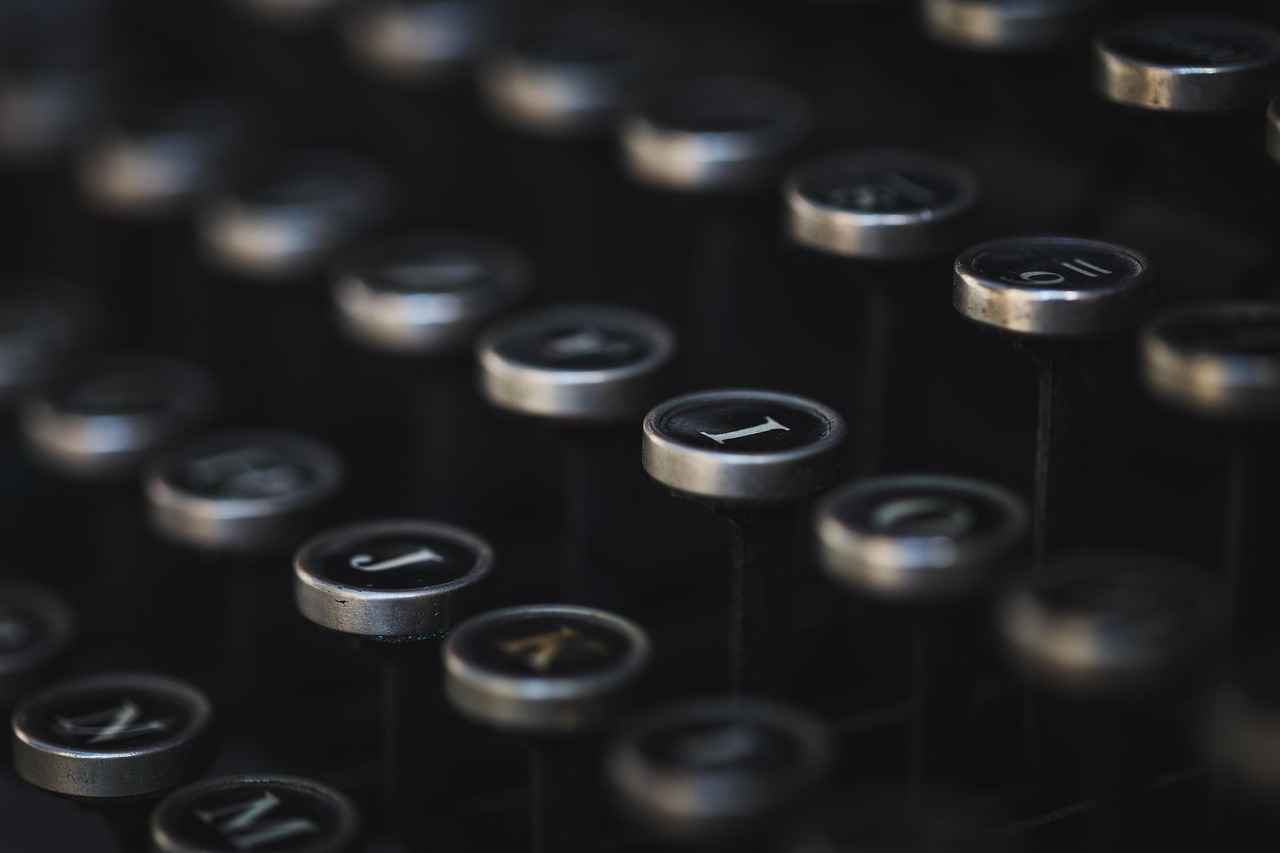
Understanding the Basics of Writing a Check
Writing a check may seem like a simple task, but it involves understanding several crucial components that ensure the transaction is accurate and secure. Before you begin the actual process of writing a check, it’s important to familiarize yourself with its fundamental elements and their respective purposes. This knowledge not only streamlines the writing process but also helps to avoid common mistakes that can lead to complications.
At its core, a check is a financial instrument that instructs a bank to pay a specified amount of money from your account to a designated payee. Understanding the different parts of a check is vital for anyone who uses them regularly. Here’s a breakdown of the essential components:
- Date: The date indicates when the check is written. It’s important for record-keeping and can affect the check’s validity.
- Payee: This is the person or organization to whom the check is written. Ensuring the name is correct is critical for processing the payment.
- Amount in Numbers: This section shows the amount of money being paid in numeric form. Accuracy here helps prevent confusion.
- Amount in Words: Writing out the amount in words serves as a double-check against the numeric amount and is legally binding.
- Memo: Although optional, this space allows you to note the purpose of the payment, which can be helpful for both you and the payee.
- Signature: Your signature authenticates the check and confirms that you authorize the transaction.
Each of these components plays a critical role in the overall process of writing a check. For instance, the date not only marks when the check was issued but also ensures that the transaction is timely. If a check is dated incorrectly, it may not be accepted by the bank or may lead to delays in processing.
Moreover, the payee’s name must be spelled correctly to avoid issues with payment processing. A common mistake is using nicknames or abbreviations, which can lead to confusion. Always use the full legal name of the individual or business.
When it comes to the amount, both the numeric and written forms must match. Any discrepancy between the two can result in the check being rejected. Therefore, it’s advisable to double-check these entries before you sign the check.
Including a memo can provide context for the payment, which is particularly useful for record-keeping. Whether it’s for rent, a service, or a gift, noting the purpose can help both parties understand the transaction’s intent.
Finally, your signature is what makes the check valid. It’s your authorization for the bank to release funds from your account. Ensure that your signature matches the one on file with your bank to avoid any issues.
Understanding these basic components of a check is crucial for anyone who wishes to use this payment method effectively. By familiarizing yourself with these elements, you can ensure that you write checks accurately and avoid common pitfalls that may arise during the process.
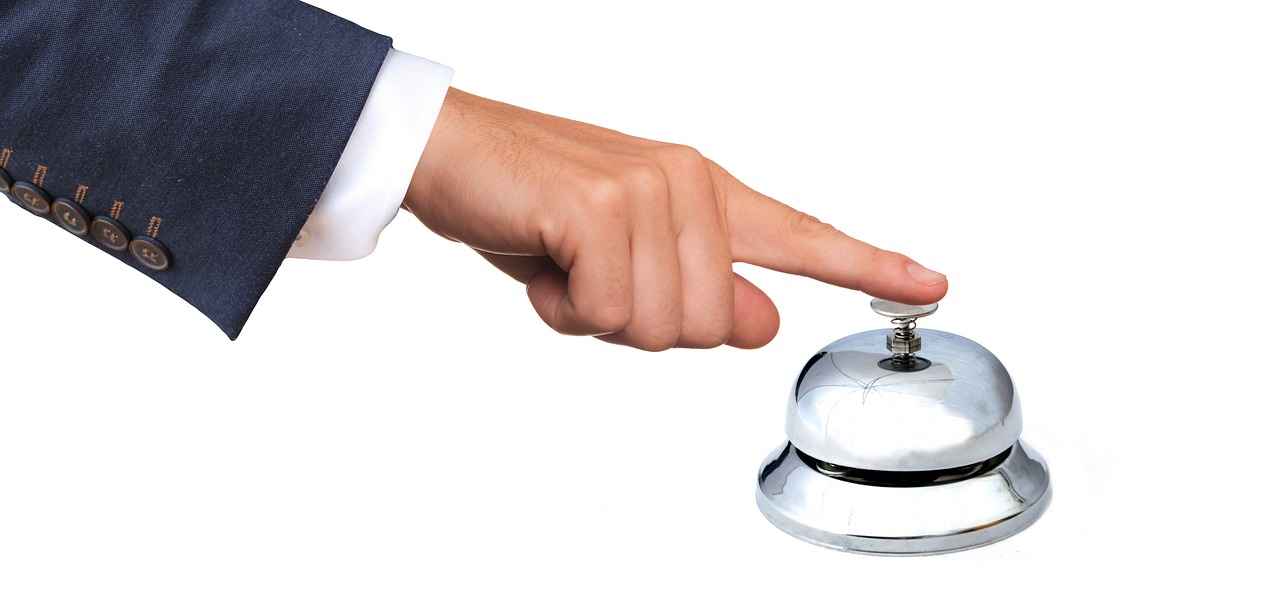
Gathering Necessary Information
When it comes to writing a check, precision is key. To ensure that your check is processed smoothly and without any issues, it is essential to gather all necessary information beforehand. This section will guide you through the critical components you need to prepare before putting pen to paper.
To write a check accurately, you need to collect specific details that will be included on the check. These elements are vital for the check to be valid and accepted by the bank. Here’s a breakdown of what you need:
- Payee’s Name: The first and foremost piece of information is the name of the individual or organization you are paying. Ensure that you spell the name correctly to avoid any processing issues.
- Amount: You will need to specify the amount you are paying. This includes both the numerical representation (e.g., 31.25) and the written form (e.g., Thirty-one and 25/100). Having both formats helps prevent any misunderstandings regarding the payment amount.
- Date: The date on the check indicates when the payment is made. It is crucial to write the date correctly to avoid any confusion about the transaction timeline.
- Your Account Details: This includes your bank account number and routing number, which are usually pre-printed on the check. Make sure these details are accurate to ensure that the funds are drawn from the correct account.
- Signature: Your signature is required to validate the check. Ensure that it matches the signature on file at your bank.
- Memo (Optional): While not mandatory, including a memo can provide clarity on what the payment is for. This can be particularly helpful for both you and the payee for record-keeping purposes.
By gathering these details in advance, you can streamline the process of writing a check, reducing the likelihood of errors. Each component plays a significant role in ensuring that your transaction is clear and efficient.
Moreover, it’s also beneficial to have a pen that writes smoothly and is indelible, as this can further enhance the clarity of your writing on the check. Avoid using erasable ink, as it can lead to potential fraud or alterations.
In summary, taking the time to gather and verify all necessary information before writing a check will not only help you avoid mistakes but also ensure that your payment is processed without delays or complications. This careful preparation is a fundamental step in managing your finances effectively.
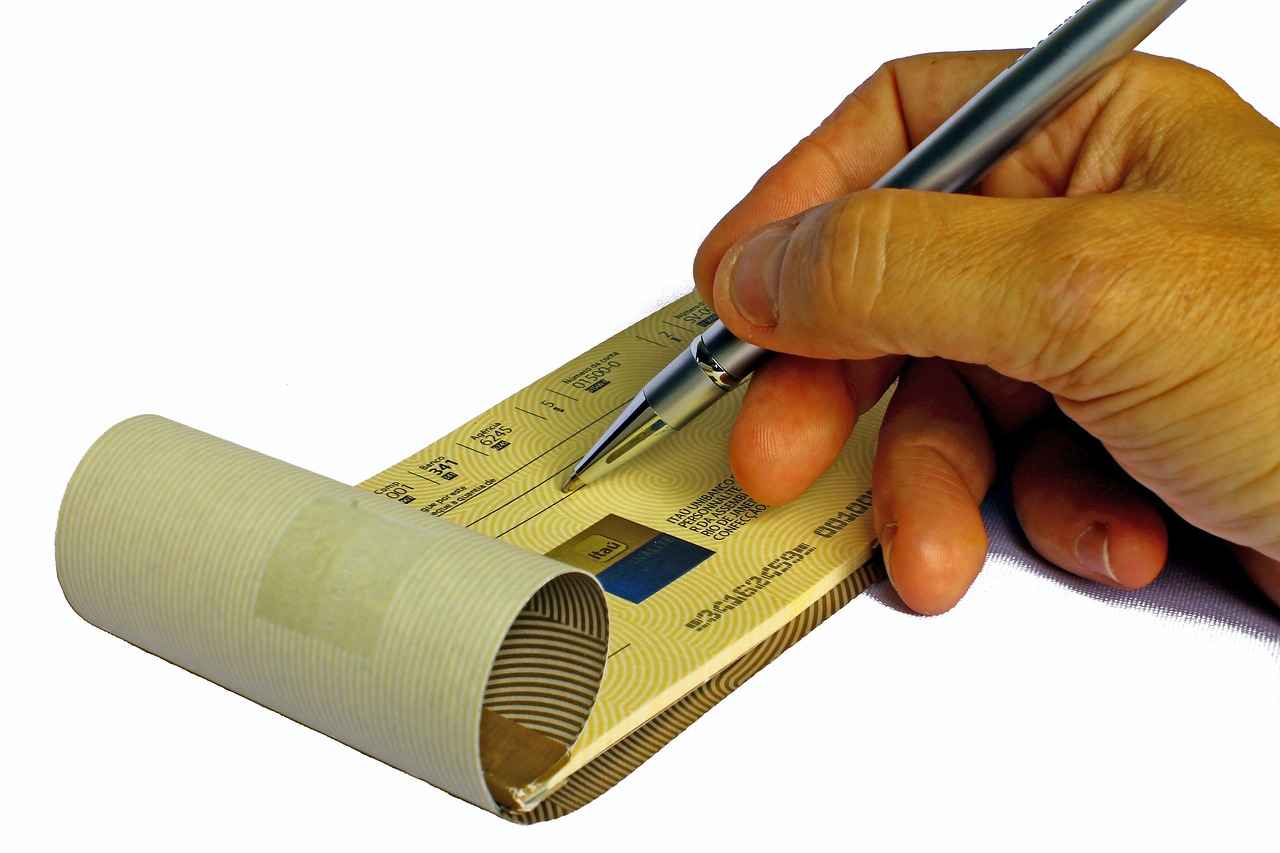
Step 1: Date the Check
The date on a check is more than just a number; it serves several critical functions in the transaction process. Properly dating your check ensures that both you and the recipient understand when the payment is intended to be made. This section will delve into the correct method for dating your check and the importance of this seemingly simple step.
When writing a check, the date is typically placed in the top right corner. It is essential to use the full date format, including the month, day, and year. For instance, instead of writing “01/02,” you should write “January 2, 2023.” This format helps avoid any confusion regarding the date, especially in international contexts where date formats may differ.
- Clarity: A clear date helps prevent misunderstandings about when the check can be cashed or deposited.
- Record Keeping: Including the exact date aids both you and the payee in maintaining accurate financial records.
- Legal Validity: Some banks may refuse to process checks that are dated incorrectly or that appear to be stale-dated (more than six months old).
Another important aspect to consider is the use of post-dating. If you write a check with a future date, it means the check cannot be cashed until that date arrives. While this can be useful for budgeting purposes, it is crucial to communicate effectively with the payee to avoid any confusion. Always ensure that the recipient is aware of the post-dated check to prevent any premature attempts to cash it.
In some cases, you may also want to consider the implications of dating a check in relation to your account balance. If you write a check and date it for a future date but do not have sufficient funds at that time, you risk bouncing the check, which can lead to additional fees and complications.
In summary, taking the time to date your check correctly is a vital step in the check-writing process. It not only helps in maintaining clarity and accuracy but also protects both parties involved in the transaction. Remember, a well-dated check is a step toward ensuring smooth financial interactions.
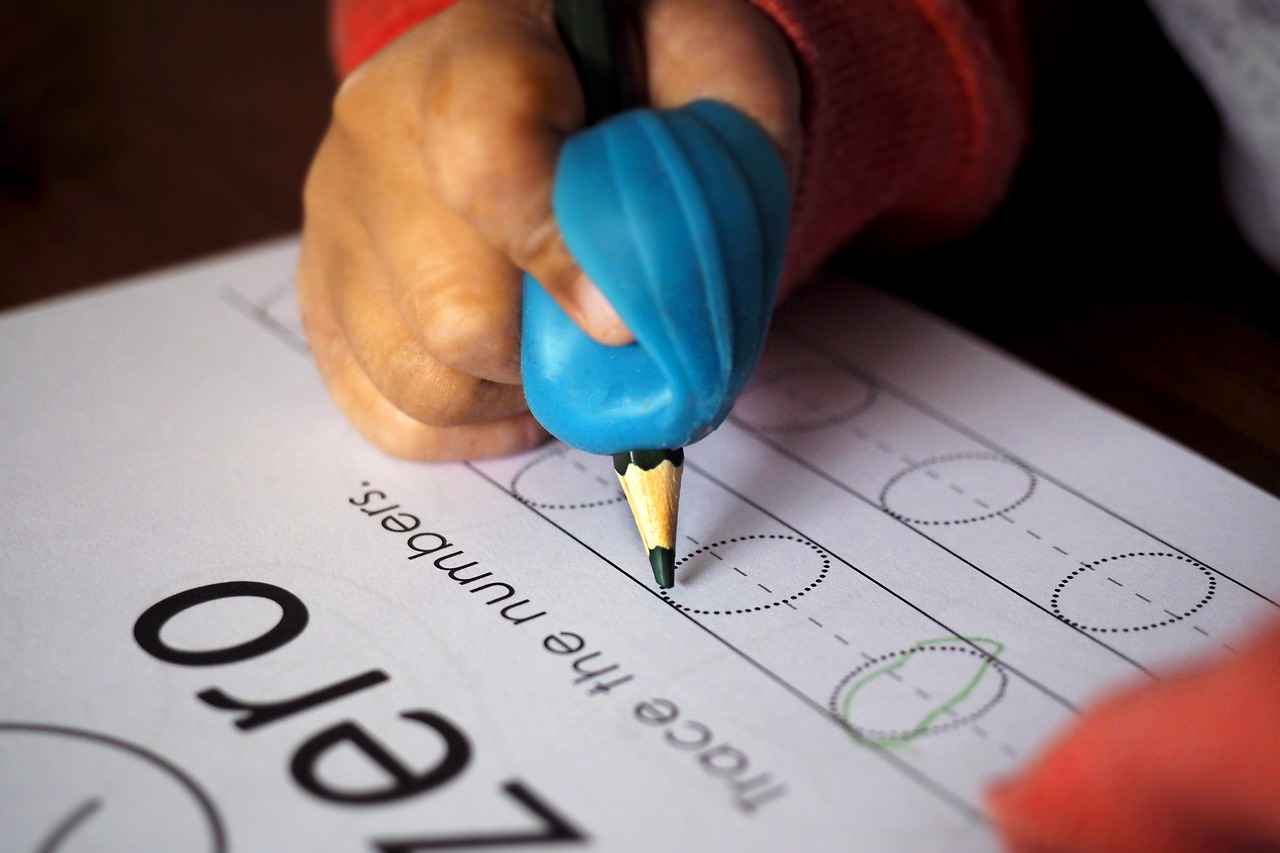
Step 2: Write the Payee’s Name
When it comes to writing a check, one of the most crucial elements is accurately entering the payee’s name. The payee is the individual or organization that will receive the funds, and ensuring that their name is correctly spelled and formatted is essential for the check to be processed smoothly.
Proper Formatting of the Payee’s Name
To avoid any potential issues, follow these guidelines for formatting the payee’s name:
- Use Full Legal Names: Always write the full legal name of the payee. For individuals, this means including first and last names. For businesses, use the registered company name as it appears on official documents.
- Avoid Nicknames: Do not use nicknames or abbreviated versions of names, as this can cause confusion and delays in processing.
- Check Spelling: Double-check the spelling of the payee’s name. A small error can lead to complications when the payee attempts to cash or deposit the check.
Common Scenarios
There are various scenarios to consider when writing the payee’s name:
- Individual Payees: Write the individual’s full name. For example, if the payee is John Doe, write “John Doe” on the check.
- Joint Payees: If the check is made out to two people, include both names. For example, “John Doe and Jane Smith.” If both need to endorse the check, use “and” between names. If either can cash it, use “or.”
- Business Payees: For businesses, always use the complete business name. For instance, write “XYZ Corporation” instead of just “XYZ.”
Considerations for Non-Profit Organizations
When writing a check to a non-profit organization, it’s important to ensure that you use the full name of the organization. Many non-profits have specific legal names that should be used to avoid any issues with cashing the check.
Importance of Accuracy
The importance of writing the correct name of the payee cannot be overstated. An incorrect name can lead to delays in payment processing or even cause the check to be returned. This can result in additional fees or complications for both the payer and the payee.
In summary, writing the payee’s name correctly involves using full legal names, checking spelling, and considering the specific context of the payment. By paying attention to these details, you can ensure that your check is processed without any issues. Always remember that accuracy in this step is vital for a smooth transaction.

Step 3: Enter the Amount in Numbers
When it comes to writing a check, entering the correct numerical amount is crucial for ensuring that the transaction is processed smoothly. This step involves more than just jotting down a number; it requires attention to detail and adherence to specific formatting guidelines. In this section, we will explore the best practices for writing the dollar amount in numeric form, ensuring clarity and accuracy.
- Use the Right Format: Always write the dollar amount in a standard format. For example, for thirty-one dollars and twenty-five cents, you should write it as 31.25. This format is universally recognized and helps prevent confusion.
- Placement Matters: The numerical amount should be placed in the designated box on the check. This box is typically located on the right side of the check, next to the dollar sign. Make sure your writing fits within the box to avoid any issues during processing.
- Be Clear and Legible: Use clear, legible handwriting when entering the amount. Avoid any cursive or overly stylized writing that could be misread. A common practice is to use a fine-tip pen to ensure that your writing is neat and clear.
- Avoid Fractions: When dealing with cents, it is advisable to use decimal points rather than fractions. For instance, instead of writing 31 and 1/4, you should write 31.25. This helps in maintaining clarity and reduces the risk of misinterpretation.
- Double-Check Your Entry: Before moving on to the next step, always double-check the numerical amount you have entered. A simple mistake can lead to significant issues, including bounced checks or incorrect payment amounts.
By adhering to these best practices, you can ensure that the numerical amount on your check is clear, accurate, and easy to process. This attention to detail not only prevents errors but also reflects professionalism in your financial transactions.

Step 4: Write the Amount in Words
Writing a check involves several crucial steps, and one of the most important is accurately writing the amount in words. This step is vital to ensure that there is no confusion regarding the payment amount, which can lead to potential issues with processing the check. In this section, we will explore the best practices for writing the amount in words, including tips, examples, and common mistakes to avoid.
Checks require the amount to be written in both numbers and words to eliminate any ambiguity. When the numerical amount is unclear or misread, it can result in incorrect payments. For instance, writing “$31.25” in words as “thirty-one dollars and twenty-five cents” ensures that the amount is understood correctly by the bank and the payee. This redundancy acts as a safeguard against fraud and errors.
To write the amount in words, follow these simple steps:
- Start with the whole dollar amount. For example, for $31, write “thirty-one dollars.”
- If there are cents involved, follow the dollar amount with “and” followed by the cents written as a fraction over 100. For $31.25, you would write “thirty-one dollars and twenty-five cents.”
- Always ensure that you spell out the entire amount clearly. Avoid abbreviations or symbols.
Here are a few examples to illustrate how to write different amounts:
| Numerical Amount | Written Amount |
|---|---|
| $10.00 | ten dollars |
| $50.75 | fifty dollars and seventy-five cents |
| $100.50 | one hundred dollars and fifty cents |
When writing the amount in words, there are several common mistakes to watch out for:
- Inaccurate Spelling: Double-check your spelling of both the dollar and cent amounts.
- Omitting Cents: Always include the cents if applicable, even if it is a round dollar amount.
- Using Symbols: Do not use the dollar sign or decimals when writing the amount in words.
To ensure clarity and avoid errors:
- Use a consistent format throughout your checks.
- Take your time to write clearly and legibly.
- Consider practicing on a separate piece of paper if unsure about the format.
By following these guidelines, you can confidently write the amount in words on your checks, ensuring that your payments are processed smoothly and accurately. Remember, clarity is key in financial transactions!

Step 5: Add a Memo (Optional)
Adding a memo to your check is an optional step, but it can significantly enhance the clarity and purpose of your transaction. A memo serves as a brief note that indicates the reason for the payment, making it easier for both the payer and the payee to track their finances. This section explores the various benefits of including a memo on your check and how it can facilitate better financial record-keeping.
- Clarifies Purpose: One of the primary reasons to include a memo is to clarify the purpose of the payment. For example, if you are paying for a service or product, writing “Payment for lawn care” can help both parties understand the transaction at a glance.
- Aids in Record-Keeping: Memos can serve as a helpful reference when reviewing bank statements or financial records. By specifying what the payment was for, you can easily categorize expenses, which is especially useful during tax season.
- Reduces Confusion: Including a memo can prevent misunderstandings between the payer and payee. If there are multiple transactions, a memo can help differentiate between them, reducing the potential for disputes.
- Enhances Professionalism: In business transactions, adding a memo can convey professionalism. It shows that you are organized and thoughtful about your financial dealings, which can enhance your reputation with vendors and clients.
- Offers a Personal Touch: For personal transactions, such as gifts or loans to friends or family, a memo can add a personal touch. Writing “Happy Birthday!” or “Loan for car repairs” can make your check feel more meaningful.
When writing a memo, it is essential to keep it concise yet informative. Typically, a few words or a short phrase will suffice. Avoid overly detailed explanations that may clutter the space. Remember that the memo section is not a legal requirement; however, it can provide valuable context for your payment.
In conclusion, while adding a memo to your check is optional, it is a beneficial practice that can enhance clarity, aid in record-keeping, and reduce confusion. By taking a moment to jot down a brief note, you can improve your financial management and communication with others.

Step 6: Sign the Check
Your signature is a vital component of a check, as it verifies your identity and authorizes the transaction. Without a proper signature, the check may be deemed invalid, leading to complications for both the payer and the payee. In this section, we will explore the significance of signing your check correctly and provide practical tips for doing so.
When you sign a check, you are essentially giving permission for the bank to withdraw funds from your account to pay the specified amount to the payee. Therefore, it is crucial to ensure that your signature matches the one the bank has on file. Here are some key points to consider when signing your check:
- Use Your Regular Signature: Always sign the check with the same signature you use for other financial documents. Consistency is key; any discrepancies could lead to rejection by the bank.
- Positioning: Sign your name on the bottom right-hand corner of the check. This is the designated area for signatures and helps in maintaining the check’s structure.
- Legibility: While your signature is unique, it should be legible enough for bank personnel to read. A clear signature minimizes the risk of errors during processing.
- Do Not Sign Blank Checks: Never leave a check blank and sign it. This practice can lead to fraud, as someone could fill in any amount or payee’s name.
Moreover, if you are writing a check on behalf of a business or organization, make sure to include the title or position you hold alongside your signature. This adds an extra layer of authenticity and authority to the transaction.
In addition to these tips, it is essential to understand the legal implications of your signature. By signing the check, you are entering into a contract with the bank and the payee, which obligates you to ensure that there are sufficient funds in your account to cover the check amount. Failure to do so may result in bounced checks, overdraft fees, and potential damage to your credit score.
Lastly, always keep a record of the checks you write, including the date, amount, and payee. This will help you keep track of your finances and ensure that you are aware of any outstanding checks that may affect your account balance.
In summary, signing your check correctly is not just a formality; it is a critical step that ensures the validity of the transaction. By following the guidelines outlined above, you can confidently sign your checks and avoid potential issues.

Step 7: Review the Check for Accuracy
Before handing over the check, it’s crucial to review it for any mistakes. This step is often overlooked, yet it plays a significant role in ensuring that your transaction proceeds smoothly. Taking the time to double-check your check can save you from potential complications and misunderstandings in the future.
- Check the Payee’s Name: Ensure that the name you wrote matches the recipient’s official name. A slight misspelling could mean the check is not processed correctly, leading to delays.
- Verify the Amount: Both the numerical and written amounts must match. A discrepancy between these two can cause confusion and may result in the check being returned or rejected.
- Review the Date: The date on the check should be current. An outdated check may not be accepted by the bank, and writing a future date can lead to issues if the recipient tries to cash it before the specified date.
- Signature Check: Your signature is what validates the check. Ensure you have signed it in the same manner as your bank has on file. A mismatch can lead to the check being deemed invalid.
- Memo Line (if used): If you included a memo, make sure it accurately reflects the purpose of the payment. This can help both you and the payee keep track of the transaction.
The importance of accuracy cannot be overstated. A simple error can lead to significant consequences, such as payment delays, bounced checks, or even fees from your bank. Additionally, if the check is lost or stolen, inaccuracies can complicate the process of canceling it or issuing a new one.
Moreover, in the digital age, where many transactions occur electronically, the need for precision in writing checks remains essential. Even though electronic payments are increasingly popular, checks are still a widely accepted form of payment in various situations, especially for personal transactions or small businesses.
In conclusion, reviewing your check for accuracy is not just a formality; it is a necessary step to ensure that your financial transactions are executed without a hitch. By taking the time to carefully examine each element of the check, you can avoid unnecessary complications and ensure that your payment reaches its intended recipient without issue.
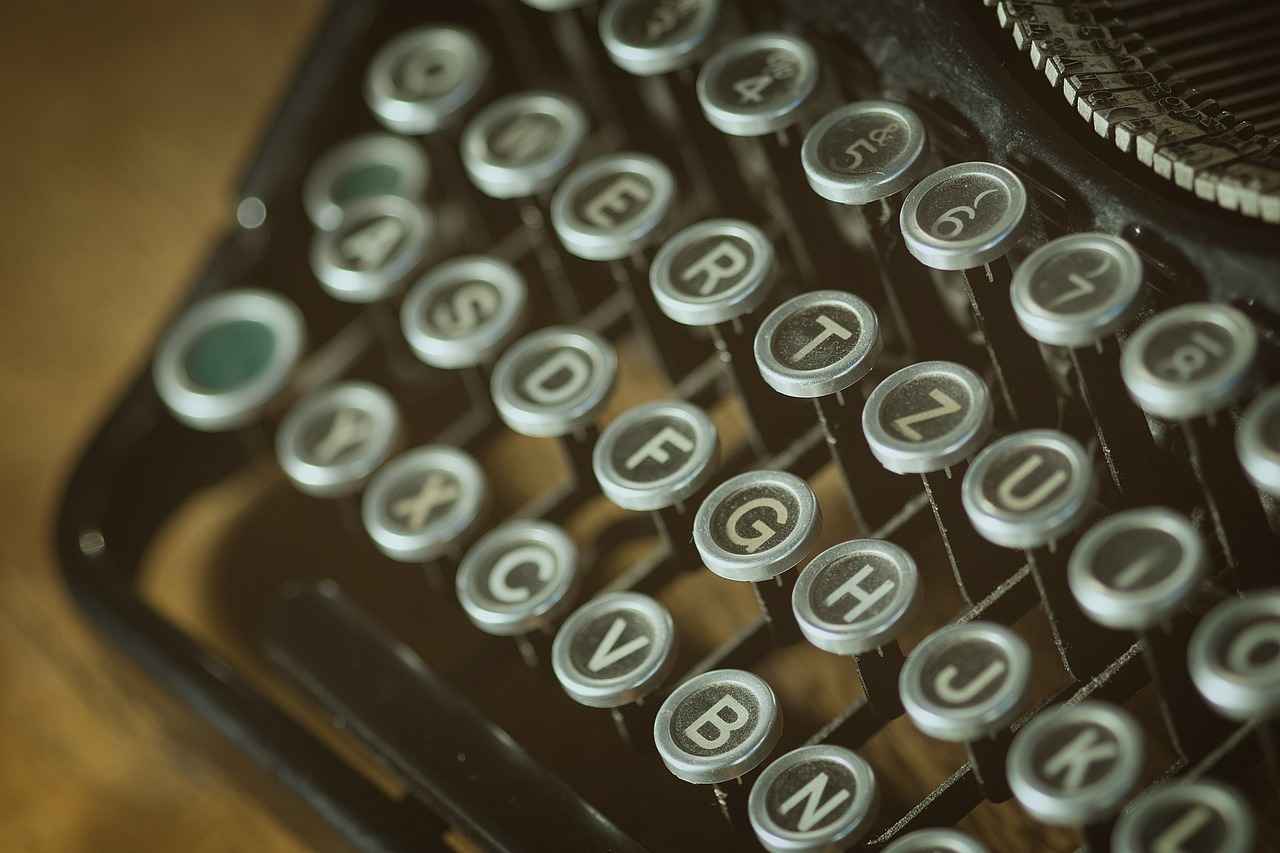
Common Mistakes to Avoid When Writing a Check
Writing a check may seem straightforward, but there are several common mistakes that can lead to delays or complications with payment processing. Understanding these pitfalls is crucial for anyone who regularly uses checks as a payment method. Below, we will explore the most frequent errors and how to avoid them.
- Incorrect Date: Failing to date a check or using an outdated date can cause confusion and delays in processing. Always ensure that the date is current and formatted correctly.
- Misspelled Payee Name: Writing the payee’s name incorrectly can result in the check being rejected. Double-check the spelling and format of the name, especially for businesses or organizations.
- Wrong Amount in Numbers: Entering the wrong numerical amount can lead to significant issues. Always verify the amount in both numbers and words to ensure they match.
- Omitting the Amount in Words: Checks require the amount to be written in words for clarity. Failing to do this can invalidate the check, so always include it.
- Leaving the Memo Blank: While not mandatory, filling in the memo field can provide context for the payment. Leaving it blank might lead to confusion later.
- Signature Errors: Your signature is what makes the check valid. Ensure it matches the signature on file with your bank to avoid issues.
- Using Ink Pens: Pencils or erasable pens can be easily altered, leading to potential fraud. Always use a permanent ink pen to write checks.
- Not Reviewing the Check: Before handing over the check, take a moment to review all the details. A quick check can save you from costly mistakes.
Why Accuracy Matters
Ensuring accuracy when writing a check is essential not only for the smooth processing of the payment but also for maintaining a good relationship with the payee. Any discrepancies can lead to delays, additional fees, or even legal issues in some cases. By being meticulous about each step in the check-writing process, you can avoid these common pitfalls.
Final Tips for Avoiding Mistakes
To further reduce the likelihood of errors, consider implementing a checklist for writing checks. This could include verifying the date, confirming the payee’s name, checking the amounts in both numbers and words, and ensuring your signature is clear. By following a systematic approach, you can enhance your confidence and accuracy when writing checks.
In conclusion, being aware of these common mistakes and taking proactive steps to avoid them can lead to a smoother and more efficient check-writing experience. Always prioritize accuracy and clarity to ensure that your payments are processed without delay.
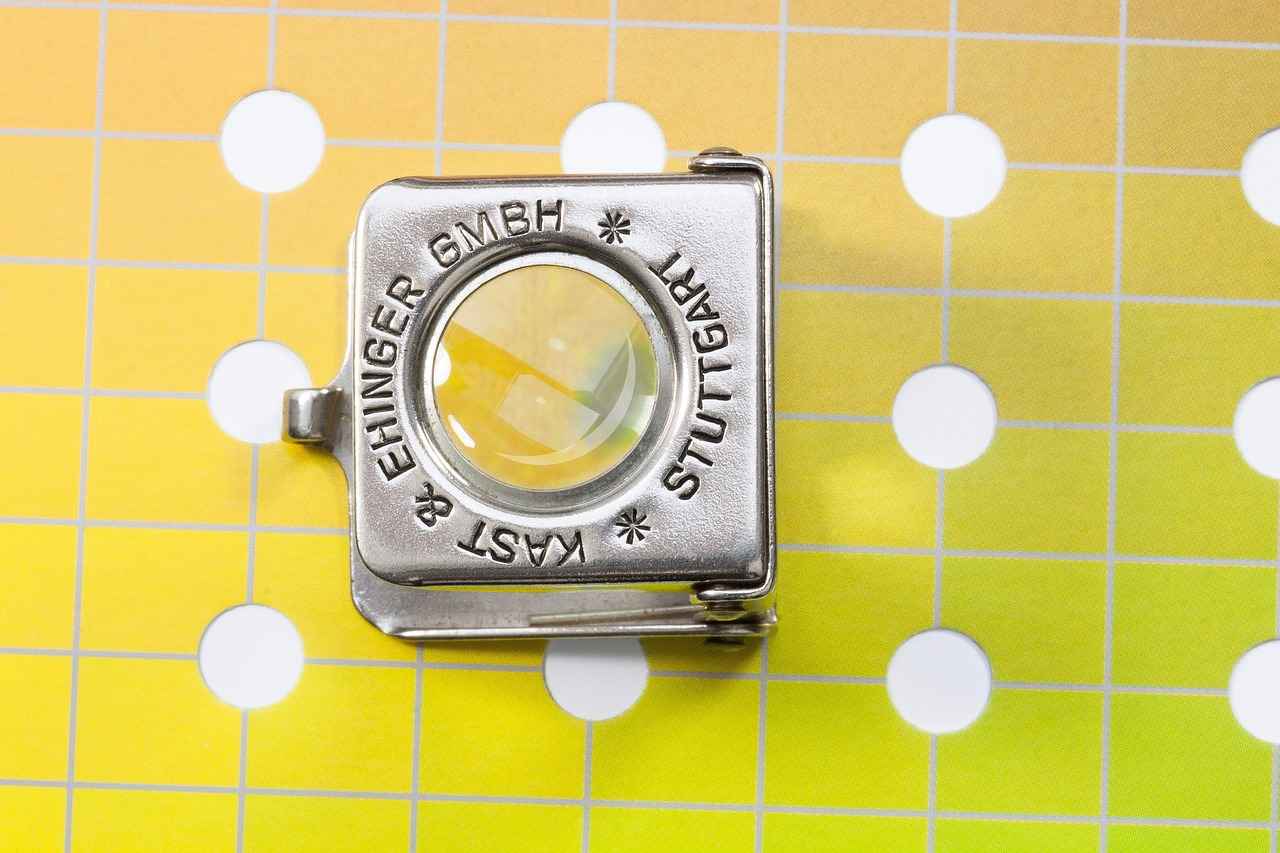
Security Tips for Writing Checks
Writing checks remains a common practice, but it also presents certain vulnerabilities, particularly to fraud. To protect your financial information and ensure your transactions are secure, consider the following practical tips:
- Use a Pen: Always write checks with a pen, preferably one that uses permanent ink. This makes it difficult for anyone to alter the information you’ve written.
- Keep Checks Safe: Store your checks in a secure location, such as a locked drawer or safe. Avoid leaving them in easily accessible places to deter theft.
- Limit Information: Only include necessary information on the check. Avoid adding your phone number or Social Security number, as these can be used for identity theft.
- Monitor Your Bank Statements: Regularly review your bank statements for any unauthorized transactions. Report any discrepancies to your bank immediately.
- Use Check Security Features: Consider using checks that have built-in security features, such as watermarks, microprinting, and color-shifting ink. These can help prevent counterfeiting.
- Be Cautious with Payee Information: Always verify the payee’s name and details before issuing a check. Incorrect or incomplete information can lead to issues with payment processing.
- Shred Old Checks: If you have old checks that you no longer need, be sure to shred them rather than throwing them away. This helps prevent unauthorized access to your banking information.
- Consider Electronic Payments: Whenever possible, opt for electronic payments or direct deposits. These methods are often more secure than traditional checks and can reduce the risk of fraud.
- Use a Check Register: Keep a detailed record of all checks written, including the date, payee, and amount. This will help you track your spending and identify any unauthorized transactions.
- Report Lost or Stolen Checks: If a check is lost or stolen, contact your bank immediately to stop payment on the check. This can prevent unauthorized use of your account.
By following these security tips, you can significantly reduce the risk of fraud and ensure that your check-writing practices are safe and secure. Remember, vigilance is key when it comes to protecting your financial information.
Frequently Asked Questions
- What information do I need to write a check?
To write a check, you need to gather the payee’s name, the amount you wish to pay, your bank account details, and the date. This ensures that your check is complete and can be processed without any issues.
- Why is it important to write the amount in words?
Writing the amount in words is crucial because it helps prevent fraud and confusion. If there’s a discrepancy between the numerical amount and the written amount, the bank will usually honor the written amount, so it’s essential to get it right!
- Can I add a memo on my check?
Absolutely! Adding a memo is optional, but it’s a great way to remind yourself or inform the payee about the purpose of the payment. It can be anything from “Rent for October” to “Birthday Gift.”
- What should I do if I make a mistake on a check?
If you make a mistake, it’s best to start over with a new check. Just cross out the error and write the correct information, but be cautious—some banks may not accept checks with corrections.
- How can I secure my checks from fraud?
To secure your checks, avoid leaving blank spaces on the payee or amount lines, use a pen to write, and store your checks in a safe place. You can also consider using checks with security features, like watermarks.


